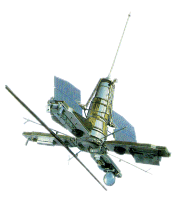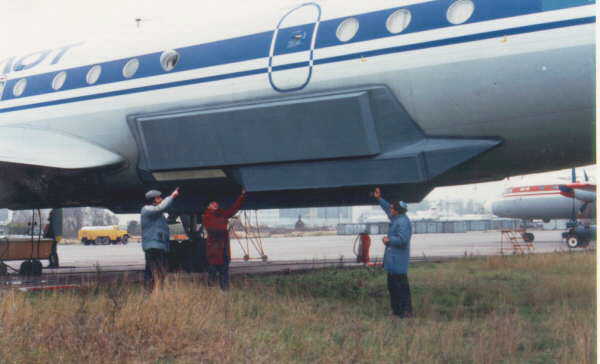About CRSE
The development that is being currently done is based on the results that had been achieved through many years of investigations into the peculiar features of radio wave scattering from natural formations and man-made objects.
The CRSE team has developed a number of unique radar facilities, among which the space borne radar of the Cosmos-1500/SICH-1 satellite (the first of its kind ever made in the world) yielded a highly economic effect which is convincingly evidenced by the fact that this radar helped to rescue a convoy of distressed cargo ships in the region of Arctic, thereby enabling all the development and launch expenses to be repeatedly offset.
 In addition, the CRSE was also involved in developing the airborne multifrequency radar system "MARS" which proved to be capable of optimizing the techniques for the effective solution to a broad range of problems including ice reconnaissance, mineral deposit prospecting, speedy detection and checking of the oil slick parameters on the sea surface, monitoring of floods, subsurface sensing, etc.
In addition, the CRSE was also involved in developing the airborne multifrequency radar system "MARS" which proved to be capable of optimizing the techniques for the effective solution to a broad range of problems including ice reconnaissance, mineral deposit prospecting, speedy detection and checking of the oil slick parameters on the sea surface, monitoring of floods, subsurface sensing, etc.
The CRSE experts have developed and introduced a number of procedures and algorithms for processing and interpreting radar data (including the methods of determining the near sea-surface wind, the parameters of active meteo formations over the sea surface, diagnosing the sea ice status, etc. ).
The CRSE efforts have received a positive appreciation on the part of the US Academy of Sciences, the specialists of several leading West-European institutions and many other organizations.
Apart from being involved in developing the novel specimens of multifrequency air- and spaceborne radars the CRSE team of experts has presently taken the initiative in designing the special-purpose radars, which are to be installed on small-size airborne vehicles capable of continuously monitoring restricted coastal areas, such as sea ports, oil terminals, of detecting the ships that violate the national sea waters and providing for cadastral surveys of seils, farming lands, etc.

In addition, using the experience in processing the multifrequency radar data the CRSE can do some work on the adaptation of the procedures and algorithms that have been developed by the CRSE experts to process the data from the air- and space borne radar systems.
The CRSE is prepared to go ahead with the development of different up-to-date high-performance remote sensing radar systems.
The CRSE is also ready to work in partnership with the parties concerned for the establishment of a joint enterprise which could be actively involved in the development of the remote sensing systems and related techniques and to render necessary services to all kinds of users who are interested in radar surveying and monitoring.
© CRSE, April 1998
